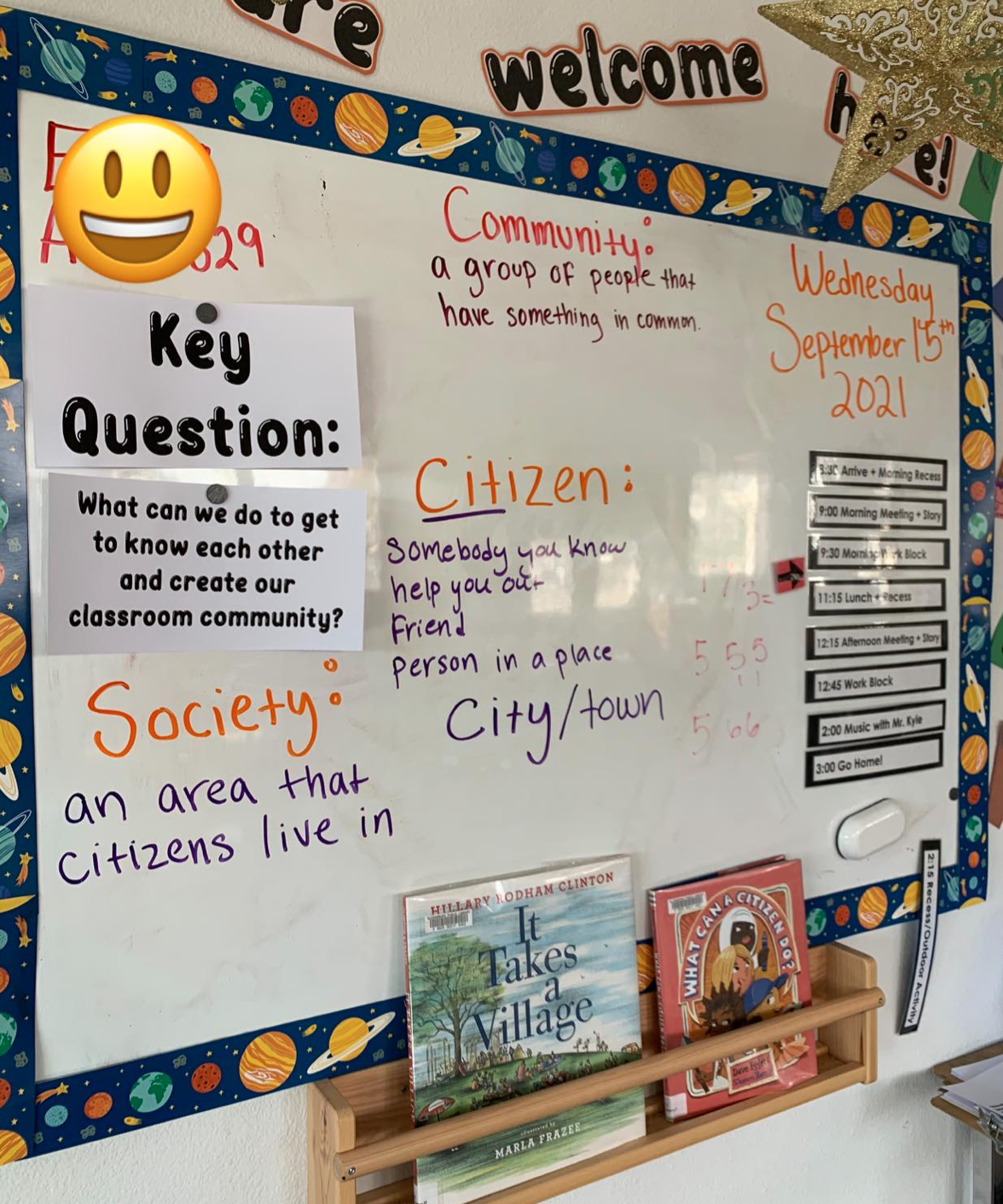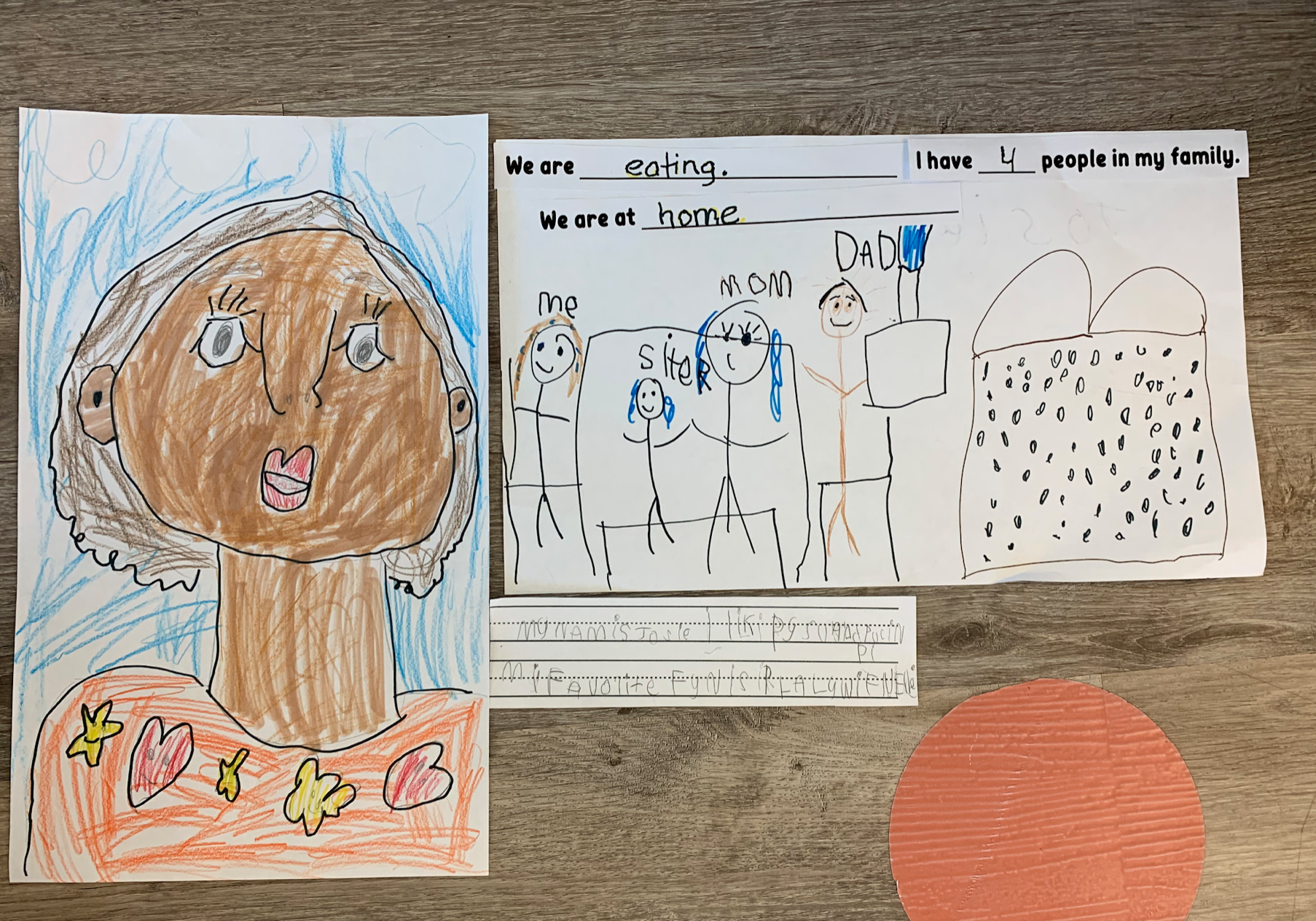Inside and Out: A First-Year Teacher Shares Her PBL Experience
I am a first-year teacher who co-teaches at Discovery Lab of Ellensburg located in Ellensburg, Washington. Our school is a multi-age school ranging from age 4 up to 9 years old (Pre-K through 4th grade) and we have 18 students in total across those ages. We have a wonderful balance of a few students who have attended Discovery Lab for multiple years mixed with a larger handful of students who start Discovery Lab for the first time in their Pre-K to 1st grade years. We were also extremely lucky to have a group of students who nearly instantaneously connected to each other, made friends, and created a trusting and safe classroom community for each and every student.
For our first project, we planned an adapted version of the Creating Our Classroom Community project provided through the ECPBL website. The question we asked was “What can we do to get to know each other and create a community inside and out of our classroom?.” Through whole class, individual, and partner activities, our goal was to help each student feel seen, identified and safe in the classroom, and to recognize their role as a part of the community. We chose to create a classroom book that was displayed in our local art gallery, Gallery One, during the month of November.
I think this project was a perfect choice to be our first project of the school year. Immediately talking about communities and the ones we are a part of helped each student recognize their unique place in the classroom, and helped them to create a caring, loving, and safe environment for their peers. It broke down the initial discomfort or nervousness that is common around the first weeks of school, and immediately created a family for the students within the classroom.
Being a first-year teacher and a first-year PBL teacher brought its own challenges, but it also brought its own strengths.
I attended a state university for my Education degree, and we were taught how to teach that aligns more closely to the standard public school system. We learned how to isolate learning into specific subjects like math and literacy, and how to structure a classroom day to “fit” in all of the learning that was required by the state standards. While this structure of teaching would work just fine in a regular classroom, it is completely different from the structure of our Discovery Lab classroom.
The focus of our school is to allow students the opportunity to discover, explore and create their own knowledge through experience and inquiry. We create plans that guide students into understanding the world around them through their own realizations, and to help foster an intrinsic desire to learn and grow. These two types of teaching styles quite often feel polarized, so initially it was a challenge to adjust my teaching style to encourage more inquiry and less direct instruction.
However, I have come to discover that project based learning and teaching aligns so deeply with how my own brain functions, and it truly is what works best for the majority of our students. I was a student as a child who was put into gifted and talented programs but also struggled with hyperactivity in a classroom space. The gifted and talented programs surrounded project based learning which I thrived deeply in. I discovered gifts and interests that have become life-long interests to this day. Giving children the space to explore and discover knowledge for themselves creates deeper and more concrete understanding and can create deeper long-term memory of what they are “learning” in the classroom space, for all students, not just those labeled “gifted.”
If you’re new to teaching or Project Based Learning, remember - don’t be afraid! PBL can feel daunting and overwhelming, but don’t be afraid to just get started. Making mistakes is a part of learning, and I promise your students will be okay if mistakes happen. Remember to start small. If taking on a fully PBL- based lesson sequence doesn’t seem feasible, start with one piece of a unit. That could be creating a driving question for a sequence of foundational lessons, or planning a shorter project with a quicker public product. As you get more comfortable, then add more layers.
Although it can be challenging to work differently from the style of teaching that you were exposed to in college, it is so fulfilling to see the impact of Project Based Learning.
Jacque Olivia Griffin is a first-year teacher (and first-year PBL teacher!) at Discovery Lab of Ellensburg which is located in Ellensburg, Washington. She attended Central Washington University and obtained her degree in Early Childhood Education with a minor in Teaching English as a Second Language. She is also a wedding and elopement photographer for her business Jacqueline Olivia Photography (Instagram: @jacuelineoliviaphoto). Some of her hobbies include sewing, playing with her dogs, traveling and spending time with her family.





